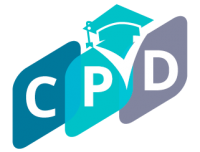Introduction:
In the digital age, technology is an integral part of the academic landscape. While it brings numerous advantages, excessive use of digital devices can lead to distractions, decreased concentration, and ultimately hinder effective studying. Implementing a digital detox for studying involves finding a balance between harnessing technology’s benefits and creating a focused learning environment. In this article, we will explore strategies for a digital detox that can help students strike this crucial balance.
- Assessing Digital Dependency: Before diving into a digital detox, it’s essential to assess your current level of digital dependency. Take note of the time spent on social media, messaging apps, and other digital platforms during study sessions. Identifying areas where technology use is excessive provides a starting point for creating a more intentional and focused study routine.
- Setting Clear Study Goals: Clearly defined study goals serve as a roadmap for effective learning. Prioritize tasks, set achievable objectives, and establish a timeline for completion. This clarity helps you stay focused on your academic objectives, reducing the temptation to succumb to digital distractions.
- Designating Tech-Free Zones: Create designated tech-free zones in your study environment. Designate specific areas or times during which you commit to being free from digital distractions. This could involve turning off notifications, placing your phone in another room, or using apps that temporarily block distracting websites.
- Utilizing Productivity Apps: Ironically, technology can also offer solutions to digital distractions. Explore productivity apps that help you stay focused during study sessions. These apps can block distracting websites, track your study time, and provide insights into your digital habits. Examples include Forest, StayFocusd, and RescueTime.
- Implementing the Pomodoro Technique: The Pomodoro Technique involves breaking study sessions into focused intervals, typically 25 minutes, followed by a short break. During these intervals, commit to focusing solely on your study tasks without any digital interruptions. This technique optimizes concentration and minimizes the chances of succumbing to digital distractions.
- Creating a Realistic Schedule: Craft a realistic study schedule that considers your peak concentration periods. Allocate specific times for studying, breaks, and digital activities. A well-structured schedule helps establish a routine, making it easier to adhere to a balanced use of technology while maintaining concentration.
- Engaging in Offline Study Activities: Embrace offline study activities that minimize reliance on digital devices. Take handwritten notes, read physical books, or utilize traditional study aids. These activities not only reduce screen time but also enhance cognitive engagement and retention.
- Establishing Digital Boundaries: Set clear boundaries for your digital activities, both academically and personally. Limit the time spent on social media, entertainment, and non-academic use of digital devices during designated study periods. Establishing these boundaries fosters a disciplined approach to technology use.
- Practicing Mindfulness: Incorporate mindfulness practices into your study routine to enhance focus and concentration. Mindfulness involves being fully present in the moment and can be achieved through techniques such as deep breathing, meditation, or mindful studying. These practices help create a mental environment conducive to learning, reducing the allure of digital distractions.
- Taking Purposeful Breaks: Breaks are essential for maintaining focus and preventing burnout. However, the quality of your breaks matters. Instead of turning to digital devices during breaks, engage in activities that refresh your mind without the need for screens. Take a walk, stretch, or practice mindfulness to recharge and return to your studies with renewed focus.
- Establishing a Tech-Free Wind Down Routine: Create a tech-free wind-down routine before bedtime. Excessive screen time, especially before sleep, can negatively impact sleep quality and overall well-being. Engage in non-digital activities, such as reading a physical book or journaling, to signal to your brain that it’s time to wind down.
- Seeking Accountability: Share your digital detox goals with friends, family, or study partners who can help keep you accountable. Having a support system encourages commitment to a balanced use of technology and minimizes the risk of falling back into digital distractions.
- Reflecting and Adapting: Regularly reflect on your digital detox efforts and assess their impact on your studying. Be open to adapting your strategies based on what works best for you. Flexibility is key to finding a sustainable balance between technology use and concentration.
Conclusion:
A digital detox for studying is not about completely abandoning technology but rather about finding a harmonious balance between its benefits and potential distractions. By assessing digital dependency, setting clear study goals, designating tech-free zones, utilizing productivity apps, implementing the Pomodoro Technique, creating a realistic schedule, engaging in offline study activities, establishing digital boundaries, practicing mindfulness, taking purposeful breaks, establishing a tech-free wind-down routine, seeking accountability, and reflecting and adapting, students can reclaim control over their study environments. This intentional approach to technology use enhances concentration, fosters a focused learning environment, and contributes to academic success while maintaining a healthy relationship with digital devices.
